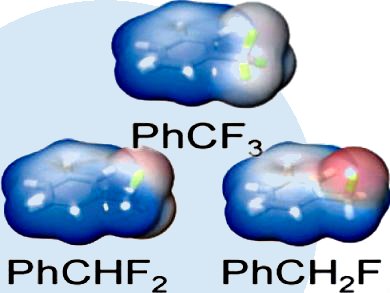About 20 % of the drugs on the market contain at least one fluorine moiety, usually a CF, CF2, or CF3 group. In addition in every drug discovery project, a fluorine chemical synthesis approach is systematically applied on the lead molecules for optimizing a variety of properties important in drug design. As hydrogen-bonding interactions play an important role in many chemical and biological systems, the effect of fluorine as a hydrogen-bond acceptor is important.
Anna Vulpetti, Novartis Institute for Biomedical Research, Basel, Switzerland, and Claudio Dalvit, University of Neuchâtel, Switzerland, have proposed a correlation, which has been substantiated by both experimental and theoretical investigations, between the fluorine NMR isotropic chemical shift and intermolecular interactions involving fluorine. In turn this has given an insight into and guidelines for the judicious selection of appropriate fluorinated moieties to be inserted into a molecule for making the most favorable interactions with the receptor.
For example, the team has found that large 19F NMR chemical shift changes are observed for the fluorine of a chemical fragment upon direct formation of an intermolecular hydrogen bond or as reporter of the formation of a distant intermolecular hydrogen bond. This has relevant implications for the 19F NMR direct- and competition-binding assays resulting in a large dynamic range for this screening methodology.
- Fluorine as a Hydrogen-Bond Acceptor: Experimental Evidence and Computational Calculations,
Claudio Dalvit, Christian Invernizzi, Anna Vulpetti,
Chem. Eur. J. 2014.
DOI: 10.1002/chem.201402858

